Idea by
Valeria Bovkun
Call for ideas 2020
Preservation of Historical Industrial Objects
Preservation of Historical Industrial Objects
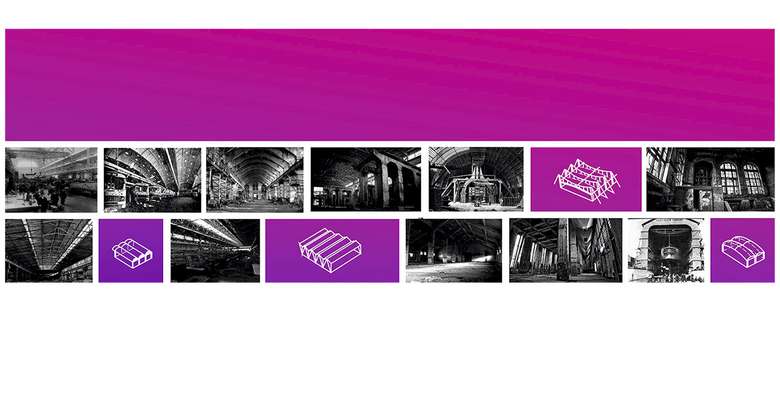
- Site-specific cases
The project idea is associated with an increase in the number of abandoned or unused industrial territories in Russia, as well as a deterioration of the ecological situation in the world. Having studied successful foreign experience, a technique was developed for the reconstruction of inactive industrial facilities with minimal environmental impact specifically for Russia.
Integration of bioclimatic design methods into the structure of an industrial facility, taking into account the following factors: existing infrastructure, climatic features of the place, pollution of the territory, historical heritage, type of historical structures. Land reclamation, current function, environmental technologies and improved infrastructure will help revitalize the territory and preserve the spirit of the place.
In the course of the work, an interaction matrix of bioclimatic methods and the type of reconstruction was created.
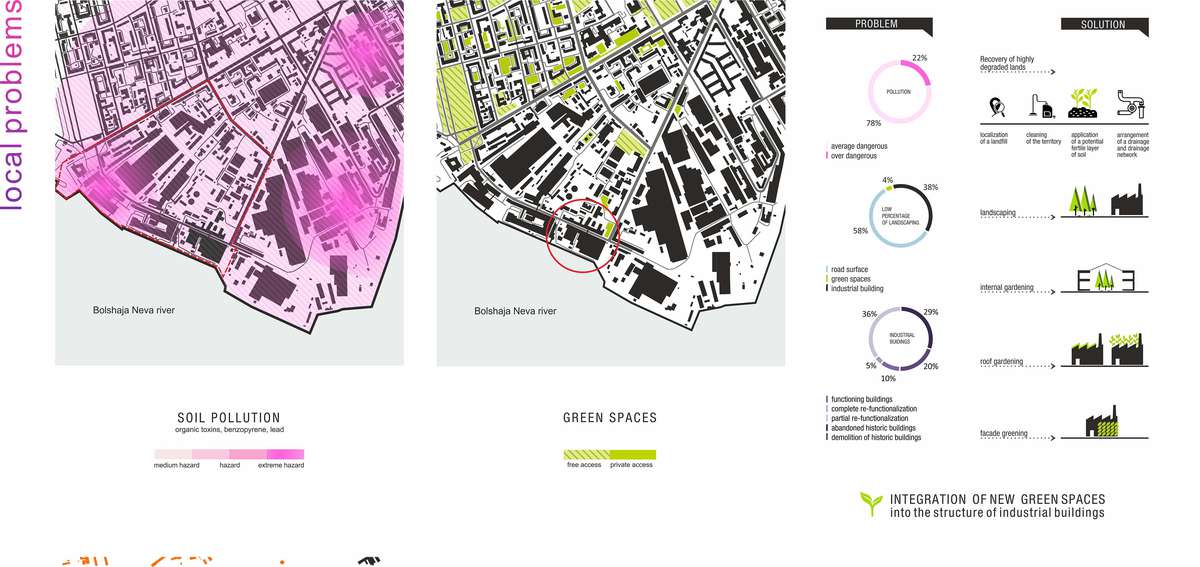
The boundaries of the study were the industrial historical district "Chekushi" in St. Petersburg. The past and present of the place were studied in detail. And the main problems have been discovered: lack of greening, underdeveloped infrastructure, historically buildings are in a depressed state as well as pollution of the premises
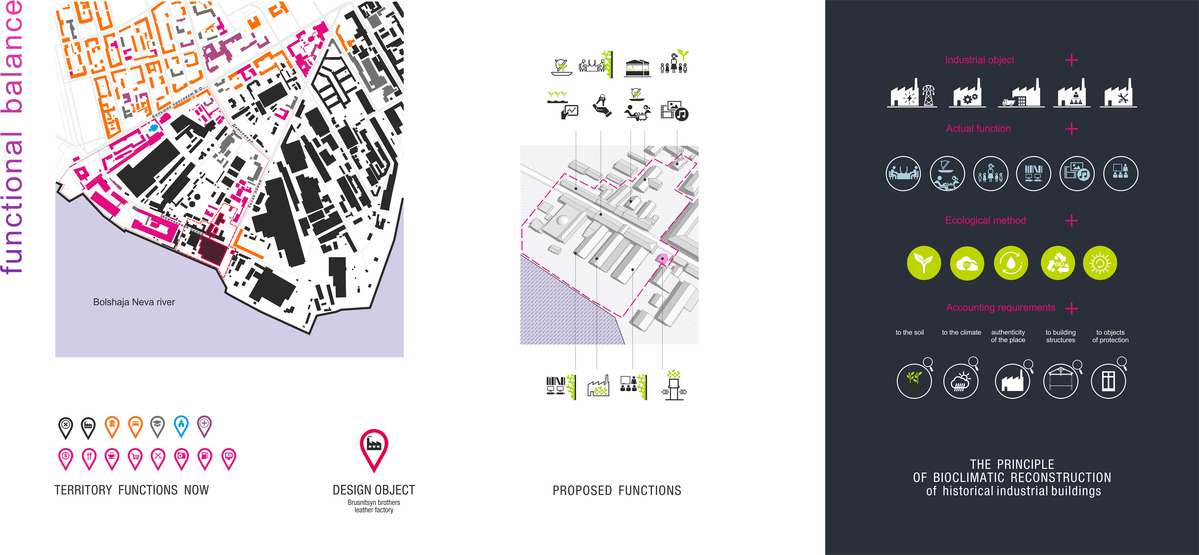
By analyzing the existing functions, a new balance of the territory was developed taking into account the solution of existing problems. Fragment of the projection: the leather factory of the Brusnitsyn brothers in the historical district of "Chekushi"
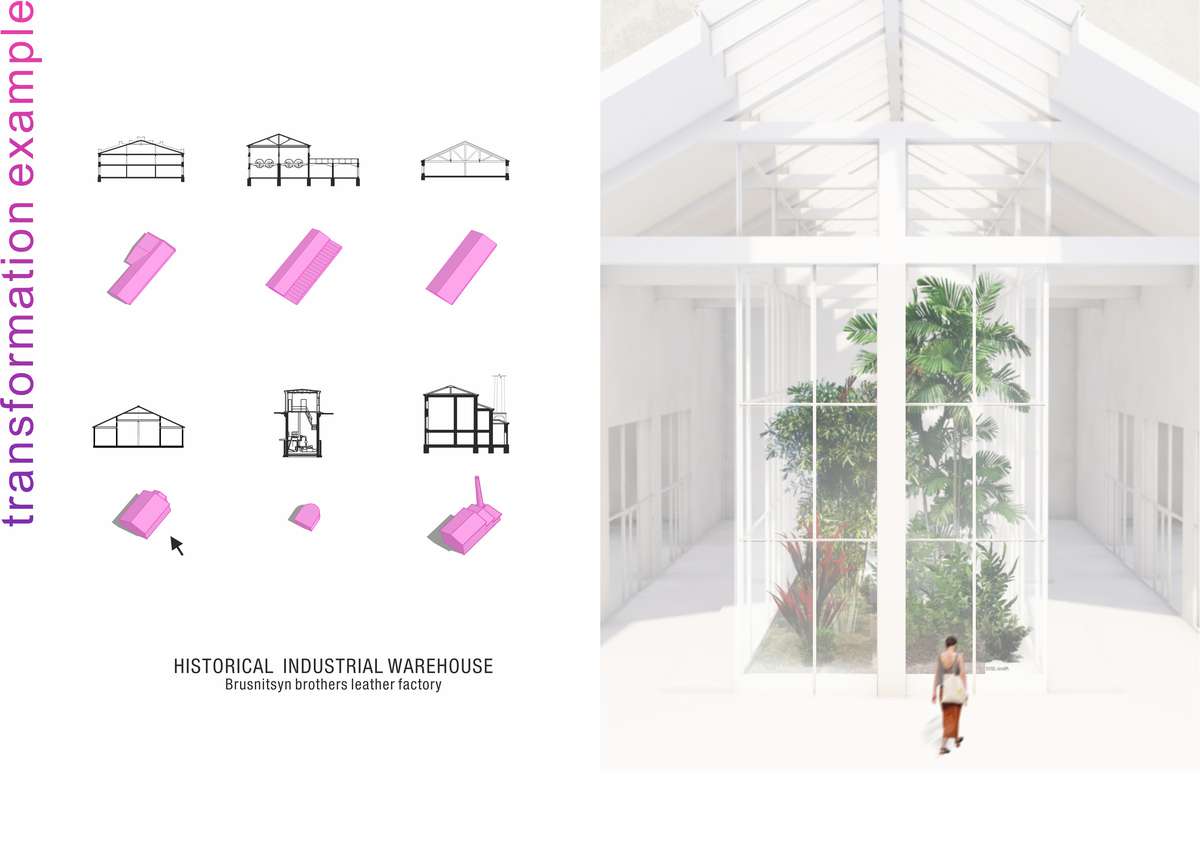
The historical design of large and small forms of industrial warehouses was studied. Given the spirit of the place and the authentic building designs, a new green space was integrated into the interior of the industrial warehouse. Fragment of the projection: the leather factory of the Brusnitsyn brothers in the historical district of "Chekushi"
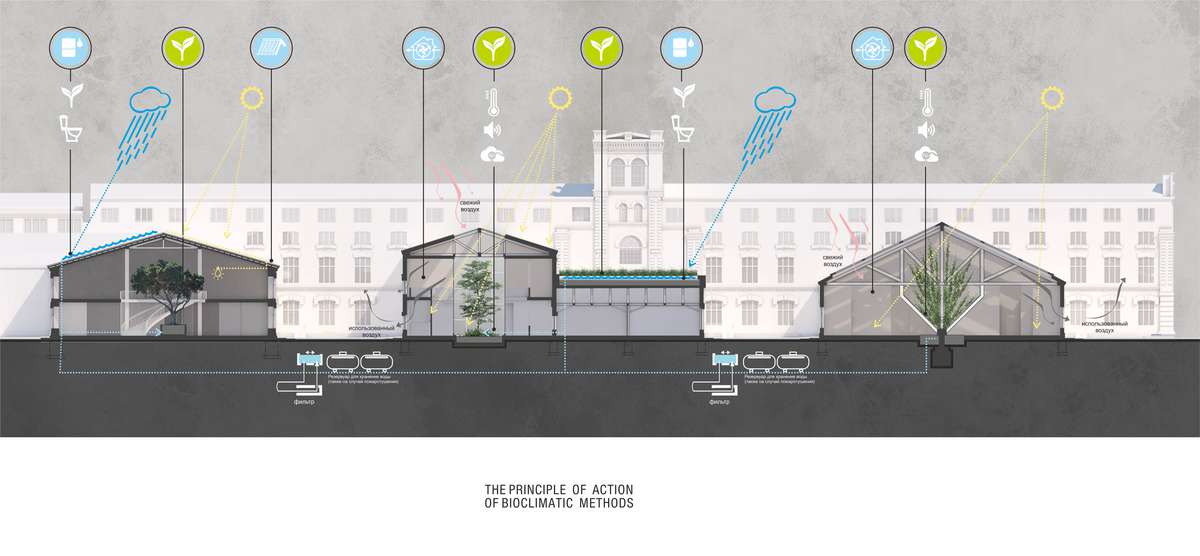
Using the cross section, the principle of the interaction of a historic building with new bioclimatic technologies is shown. The project provides for the maximum conservation of building protection items.
Fragment of the projection: the leather factory of the Brusnitsyn brothers in the historical district of "Chekushi"

The analysis of successful foreign experience in the reconstruction of industrial spaces helped to adapt various bioclimatic techniques to Russian design standards. A matrix of interaction of various energy-efficient technologies and types of reconstruction has been created.
Preservation of Historical Industrial Objects
Preservation of Historical Industrial Objects

- Site-specific cases
The project idea is associated with an increase in the number of abandoned or unused industrial territories in Russia, as well as a deterioration of the ecological situation in the world. Having studied successful foreign experience, a technique was developed for the reconstruction of inactive industrial facilities with minimal environmental impact specifically for Russia.
Integration of bioclimatic design methods into the structure of an industrial facility, taking into account the following factors: existing infrastructure, climatic features of the place, pollution of the territory, historical heritage, type of historical structures. Land reclamation, current function, environmental technologies and improved infrastructure will help revitalize the territory and preserve the spirit of the place.
In the course of the work, an interaction matrix of bioclimatic methods and the type of reconstruction was created.
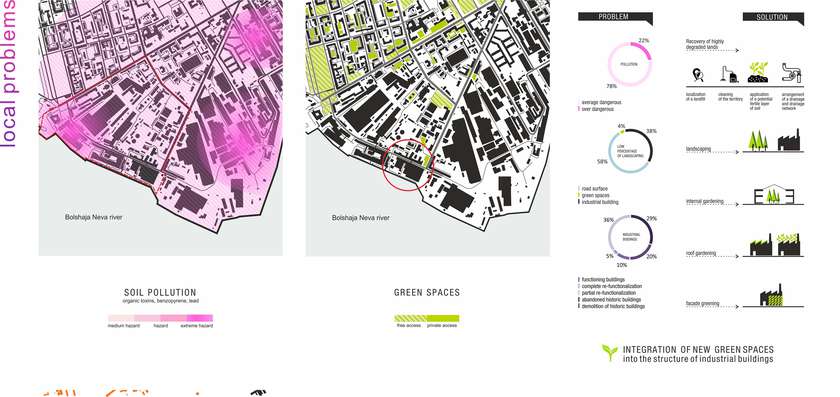
The boundaries of the study were the industrial historical district "Chekushi" in St. Petersburg. The past and present of the place were studied in detail. And the main problems have been discovered: lack of greening, underdeveloped infrastructure, historically buildings are in a depressed state as well as pollution of the premises
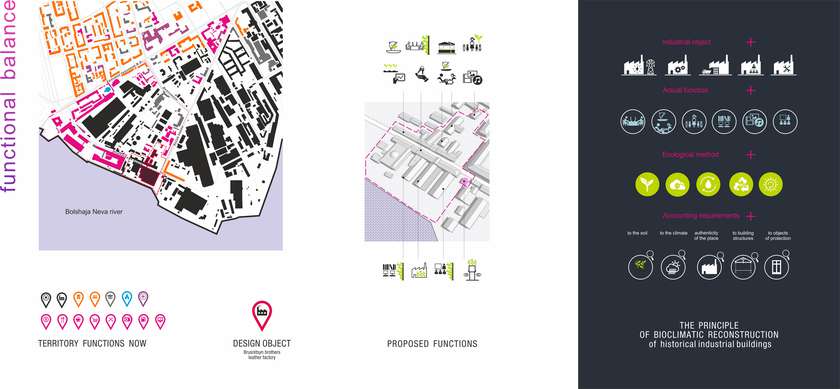
By analyzing the existing functions, a new balance of the territory was developed taking into account the solution of existing problems. Fragment of the projection: the leather factory of the Brusnitsyn brothers in the historical district of "Chekushi"
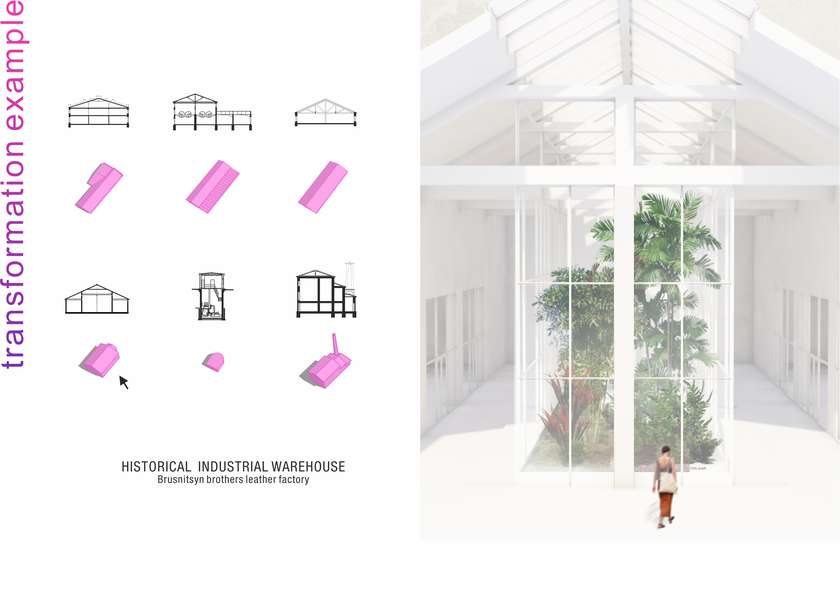
The historical design of large and small forms of industrial warehouses was studied. Given the spirit of the place and the authentic building designs, a new green space was integrated into the interior of the industrial warehouse. Fragment of the projection: the leather factory of the Brusnitsyn brothers in the historical district of "Chekushi"
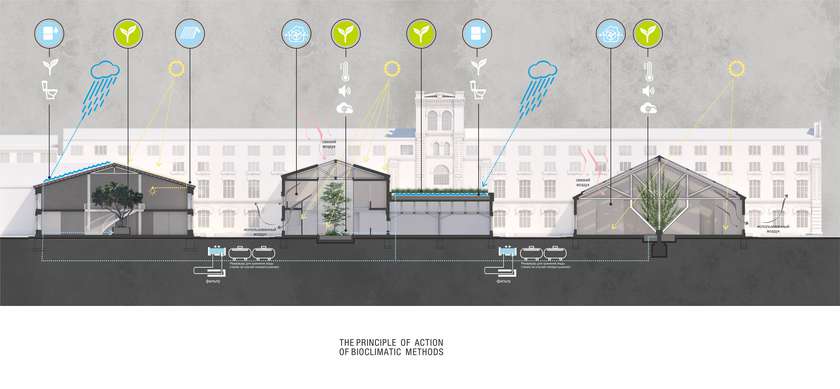
Using the cross section, the principle of the interaction of a historic building with new bioclimatic technologies is shown. The project provides for the maximum conservation of building protection items.
Fragment of the projection: the leather factory of the Brusnitsyn brothers in the historical district of "Chekushi"
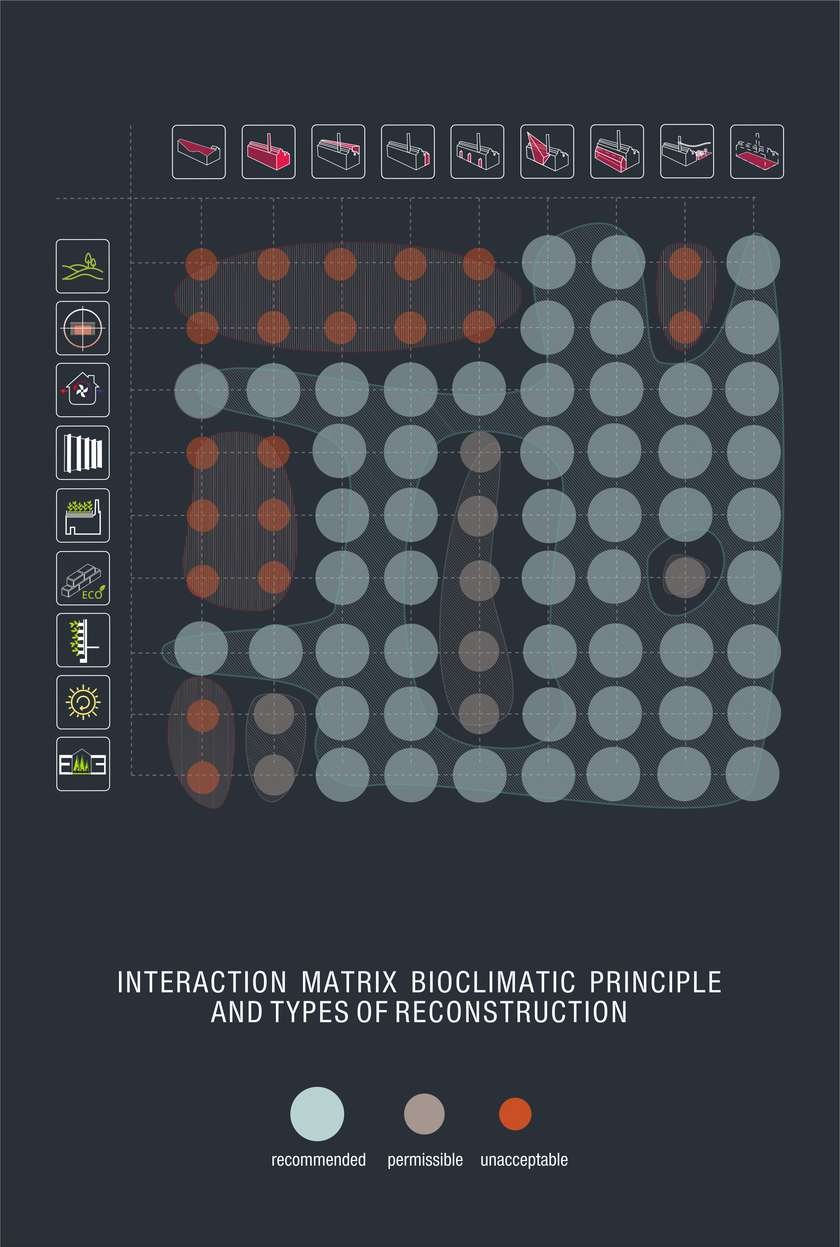
The analysis of successful foreign experience in the reconstruction of industrial spaces helped to adapt various bioclimatic techniques to Russian design standards. A matrix of interaction of various energy-efficient technologies and types of reconstruction has been created.